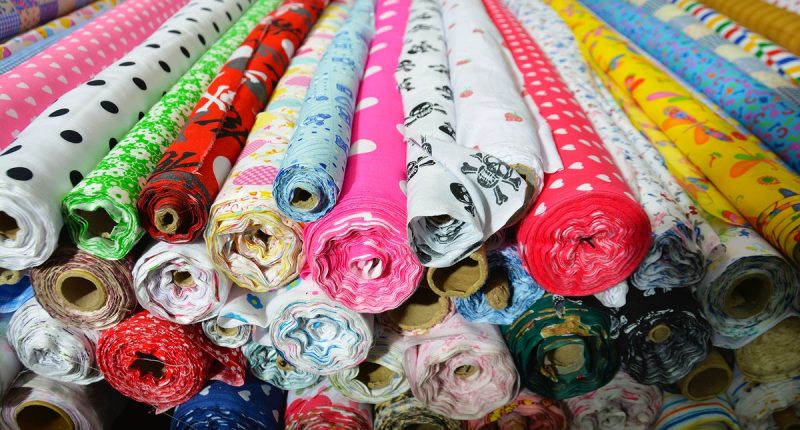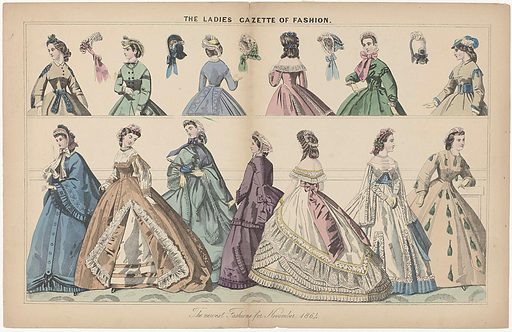That clothing item you bought for a low price might cost more than you realize, especially for those who made it. Behind its low price, there was sweat, suffering, and exploitation for most of the garment workers. Fast fashion is one of the most labor-intensive industries, with garment workers dealing with hazardous working conditions, wage theft, long hours, low pay, and abuse based on their gender.[1] Each garment goes through a complex supply chain around the globe.[2]
Supply chain transparency means that companies know what’s happening at every stage of their supply chains and also communicate that information clearly both internally and to consumers.[3] Supply chain transparency has recently become important for the fashion industry due to consumers’ demand for sustainability and brands’ responsibility to the environment.[4] Consumers are concerned about the quality, origin and safety of a garment and take ethical considerations before purchasing the products. Unfortunately, many companies and their suppliers are afraid that disclosing too much information about their supply chain could hurt their competitiveness or expose them to criticism, hence why they tend to lack transparency. [5]
Despite these fears, most companies now prioritise and require detailed information about supplier practices, from labor conditions to environmental impact.[6] For example, companies like Patagonia pay good prices to suppliers to ensure that the garment workers receive living wages and have safe working conditions as part of their ethical supply chain.[7] If a company adheres to ethical standards, it will improve the well-being of garment workers and also contribute to a greater supply chain, as there is a more skilled workforce and ensure regulatory compliance.[8]
However, the supply chains for fast fashion brands are designed for maximum efficiency and speed, to generate huge profit margins often at the expense of garment workers’ well-being.[9] International labor standards exist to protect workers globally, and companies sourcing from these countries are legally obligated to ensure their suppliers comply. According to international agreements and organizations like the International Labour Organization (ILO), these standards that support decent working conditions, appropriate hours, and sufficient pay have developed from local and national laws.[10] However, profits still outweigh worker safety and fair compensation, revealing that neither companies nor governments are doing enough. Many brands maintain minimal control over their supply chains to avoid legal liability, often allowing the subsidiaries to be unregulated, allowing them to keep production costs low, but this damages their reputations, especially as consumers increasingly demand ethical transparency.[11]
Today, consumers, governments, and stakeholders are pressing companies harder than ever to provide detailed information about their supply chains. Consumers want to know how garment workers are treated, where materials come from, and what efforts brands are making to improve working conditions. However, this surge in demand has also led to an increase in false claims or “greenwashing” about ethical sourcing, resulting in backlash and legal action. For that reason, there is an urgent need for guidelines to mitigate greenwashing to enable companies to demonstrate their genuine commitment to sustainability and supply chain transparency. [12] The truth is, supply chains are complex, making full transparency a continuous and evolving challenge.[13]
Examples of how supply chains can be more transparent:[14]
1. Train employees
Maintains ethical standards and compliance to promote accountability and results in a productive and successful supply chain.
2. Communicate the supply chain process
Developing a detailed overview of raw material sourcing to final product assembly, identifying every stage involved.
3. Conduct regular audits
Verify working conditions, wages, and safety standards through thorough audits. Transparently disclose audit results along with any corrective actions taken.
4. Share supplier information
Maintain and provide an up-to-date list of suppliers to build trust and accountability with their standards regarding labor practices, human rights, and environmental responsibility.
5. Report transparently to consumers
Offer honest reporting on supply chain practices to consumers and demonstrate corporate responsibility.
Transparency in supply chains fosters a culture of continuous improvement within companies and across their value chains. When companies openly share where and how their products are made, they create accountability, encourage ethical practices, and build lasting trust with consumers.[15]
Transparency empowers both businesses and consumers to make decisions aligned with their values. Studies show that consumers are four times more likely to trust companies that are purpose-driven and transparent about their labor practices. They’re also significantly more inclined to buy from companies they view as ethical and sustainable.[16]
Ultimately, companies that adopt ethical sourcing practices can strengthen their brand reputation, build consumer trust, and contribute to long-term sustainability goals. [17] As consumer demand for ethical accountability continues to rise, transparency isn’t just the future of fashion; it’s the standard that must be met.
References:
[1] Mykhail Helm, Beneath the Seams: The Human Toll of Fast Fashion, EarthDay (Sept. 9, 2024), https://www.earthday.org/beneath-the-seams-the-human-toll-of-fast-fashion/
[2] Robertson, M. (2024, February). It takes exploitation to look this good: Garment Workers, modern fashion, and the oppression of women. It Takes Exploitation to Look This Good: Garment Workers, Modern Fashion, and the Oppression of Women | Georgetown Journal of Gender and the Law | Georgetown Law. https://www.law.georgetown.edu/gender-journal/online/volume-xxv-online/it-takes-exploitation-to-look-this-good-garment-workers-modern-fashion-and-the-oppression-of-women/
[3] Alexis Bateman & Leonardo Bonanni, What Supply Chain Transparency Really Means, Harv. Bus. Rev. (Aug. 20, 2019), https://hbr.org/2019/08/what-supply-chain-transparency-really-means.
[4] Pastor, L. (January 7, 2025). Ethical sourcing in the textiles industry. Enhesa. https://www.enhesa.com/resources/article/ethical-sourcing-in-the-textiles-industry/
[5] The age of transparency. Hunter Campbell. (July 16, 2023). https://www.huntercampbell.co.nz/the-age-of-transparency/
[6] Kristin Schultz, The Rising Importance of Supply Chain Transparency, ESW, https://esw.com/the-rising-importance-of-supply-chain-transparency/ (last visited June 10, 2025).
[7] Living wage. Patagonia. (n.d.). https://www.patagonia.com/our-footprint/living-wage.html ; Dragonsourcing. (Sept. 21, 2024), Ethical sourcing efforts of Patagonia: A comprehensive overview. Dragon Sourcing | Global Sourcing Company. https://www.dragonsourcing.com/ethical-sourcing-of-patagonia/
[8] Pastor, L. (January 7, 2025). Ethical sourcing in the textiles industry. Enhesa. https://www.enhesa.com/resources/article/ethical-sourcing-in-the-textiles-industry/
[9] Helm, M. (2024, September 10). Beneath the seams: The human toll of fast fashion. Earth Day. https://www.earthday.org/beneath-the-seams-the-human-toll-of-fast-fashion/
[10] International Labor Standards: Meeting International Labor Standards: The Outsourcing and offshoring debate – FasterCapital. Faster Capital. (2025, April). https://fastercapital.com/content/International-Labor-Standards–Meeting-International-Labor-Standards–The-Outsourcing-and-Offshoring-Debate.html
[11] Ross, E. (n.d.). Fast fashion getting faster: A look at the unethical labor practices sustaining a growing industry. International Law and Policy Brief. https://studentbriefs.law.gwu.edu/ilpb/2021/10/28/fast-fashion-getting-faster-a-look-at-the-unethical-labor-practices-sustaining-a-growing-industry/
[12] Inês, A., Diniz , A., & Moreira, A. C. (2023, September 10). A review of Greenwashing and Supply Chain Management: Challenges Ahead. Cleaner Environmental Systems. https://www.sciencedirect.com/science/article/pii/S2666789423000302
[13] Supply Chain Transparency defined: Why it matters and its benefits. Oracle Europe. (n.d.). https://www.oracle.com/europe/scm/supply-chain-transparency/
[14] Jackley, M. (2023, November). Supply Chain Transparency defined: Why it matters and its benefits. Oracle Europe. https://www.oracle.com/europe/scm/supply-chain-transparency/ ; Automation Alley. (2022, November 24). How to improve supply chain transparency. https://www.automationalley.com/2022/11/04/how-to-improve-supply-chain-transparency/
[15] Amanda McGrath & Alexandra Jonker, Transparency Across the Entire Supply Chain: Why It Matters and How It Works, IBM (Dec. 5, 2023), https://www.ibm.com/think/topics/supply-chain-transparency.
[16] Mark Jackley, Supply Chain Transparency Defined: Why It Matters and Its Benefits, Oracle (Nov. 21, 2023), https://www.oracle.com/sa/scm/supply-chain-transparency.
[17] Alofabi, O. (2024, June). Ethical sourcing in the textile industry: Challenges, benefits, and the path forward. ResearchGate.https://www.researchgate.net/publication/385791545_Ethical_Sourcing_in_the_Textile_Industry_Challenges_Benefits_and_the_Path_Forward


















